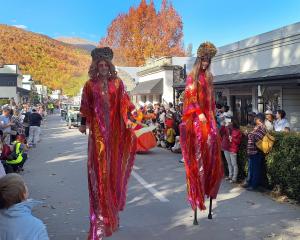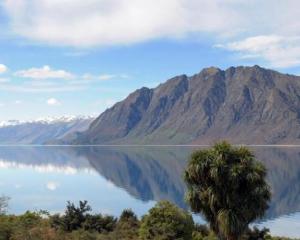
Rain over the past two and a-half weeks has slowed work on the $22 million project, but it is on track to be finished by Christmas, Queenstown Lakes District Council infrastructure general manager Peter Hansby says.
But more rain could mean the first stage — a 2km section from Remarkables Park to Glenda Dr — is sealed temporarily so it can be used throughout winter and resealed later. It is still expected to open by the end of May. The second stage — extending the road to a roundabout near Pak’n Save — is due for completion on December 22.
Formally called Hawthorne Dr, the road will link Remarkables Park to State Highway 6 via the rear of Queenstown Airport and Glenda Dr.
Fulton Hogan began work on the project last October.
Mr Hansby said 50 to 60 people were working on site six days a week, with the main focus now at the end of Queenstown Airport’s main runway.
The project was unusual as it was mostly invisible to Queenstown residents.
"It’s not often you’re doing a greenfield project across unformed land.
"An advantage of that is you don’t have to manage traffic."
Project manager Simon Brackstone, of council consultants Coffey Projects, said it was much more than just a new road.
"It’s a major underground infrastructure project with a bit of sticky stuff on the top."
Along with sewage, power and lighting, the infrastructure included a major stormwater connection near the end of the runway that collected water from most of Frankton Flats before plunging down to the Shotover River delta for dispersal.
The water would gain so much velocity flowing down to the delta from behind Glenda Dr that a "hydraulic brake" was being installed to slow it down.
The stormwater lines were made from polyethylene pipes up to 1.8m wide and 100mm thick, and were as big as any in New Zealand, Mr Brackstone said.












